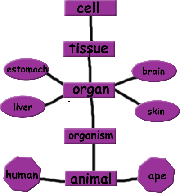Nuclear reactor accidents
1) Windscale 1957 England
That was the worst nuclear disaster in the world up to that time, and the worst accident of all time in the UK.
This early nuclear reactor was called a “pile”. It consisted of natural uranium (fuel) and graphite blocks (moderator). Its coolant was air, which was blown by huge fans. Because its purpose was not to produce electricity, but to produce plutonium for bombs, the hot air was just thrown away, by means of a vent stack. There were 2 reactors and 2 stacks.
This design was dangerous because of a possibility of a graphite fire. This possibility was well known by British and also American scientists who had both been experimenting with this kind of reactor. The Americans shared some classified information with the British because they were very worried about an accident happening in there.
Firstly, they recommended installing filters at the top of the vent stacks, to contain radioactive materials in case of accident. If everything was running according to plan only hot air would be leaving the chimney , but if the fuel and fission products came out of the containment because of an overheating, those would be also blown out of the reactor. It was very hard and costly to install the filters but the job was done (fortunately as we will see later).
They also disclosed information about the processes the occur in graphite when it is heated inside the reactor. It get deformed. Most importantly, there is a phenomenon called Wigner release, which consists of a storage of energy inside the graphite blocks (a kind of potential energy) which can be released suddenly and cause an overheating of the reactor, and possibly trigger the feared graphite fire. To avoid this problem the Americans explained that a procedure called annealing should be applied periodically to release this stored energy in a safe manner. That meant that the reactor had to be shut down at regular intervals to apply this procedure. It was a nuisance, because they were in a hurry to produce lots of plutonium for bombs.
During one of this annealing sessions, the worst happened: the reactor overheated and caught fire. The graphite was burning very intensely because of the huge fans blowing air and it was very hard to put this fire out. Fuel elements melted and fission products were released and sent to the vent stack. Luckily there was a filter there, but the gases still got out and contaminated the surrounding farms (filters can stop solid particles but not gases), like iodine-131.
Both reactors were shut after the accident.
The place changed its name to Sellafield, which is still the main nuclear site in England, home to the THORP plant which reprocesses spent nuclear fuel.

